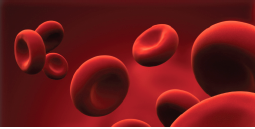Obese individuals may be at increased risk of iron deficiency (ID), but it is unclear whether this is due to poor dietary iron intakes or to adiposity-related inflammation. The current study investigated the relations between body mass index (BMI), dietary iron, iron status, and inflammation [C-reactive protein (CRP)]. Data from the 1999 Mexican Nutrition Survey, which included 1174 children and 621 nonpregnant women, were analyzed. The prevalence of ID was significantly higher in obese women and children compared with normal-weight subjects [odds ratios (95% CIs): 1.92 (1.23, 3.01) and 3.96 (1.34, 11.67) for women and children, respectively]. Despite similar dietary iron intakes in the two groups, serum iron concentrations were lower in obese women than in normal-weight women (P = 0.014) and total-iron-binding capacity was higher in obese children than in normal-weight children (P < 0. (provigil) 001). CRP concentrations in obese women and children were 4 times those of their normal-weight counterparts (P < 0.05) and CRP, but not iron intake, was a strong negative predictor of iron status (P < 0.05). The increased risk of ID in obesity may be due to the effects of obesity-related inflammation on dietary iron absorption. Am J Clin Nutr. 2011 May;93(5):975-83. PMID: 21411619.
Home Research News Iron deficiency in obesity is predicted by obesity-related inflammation rather than dietary...








